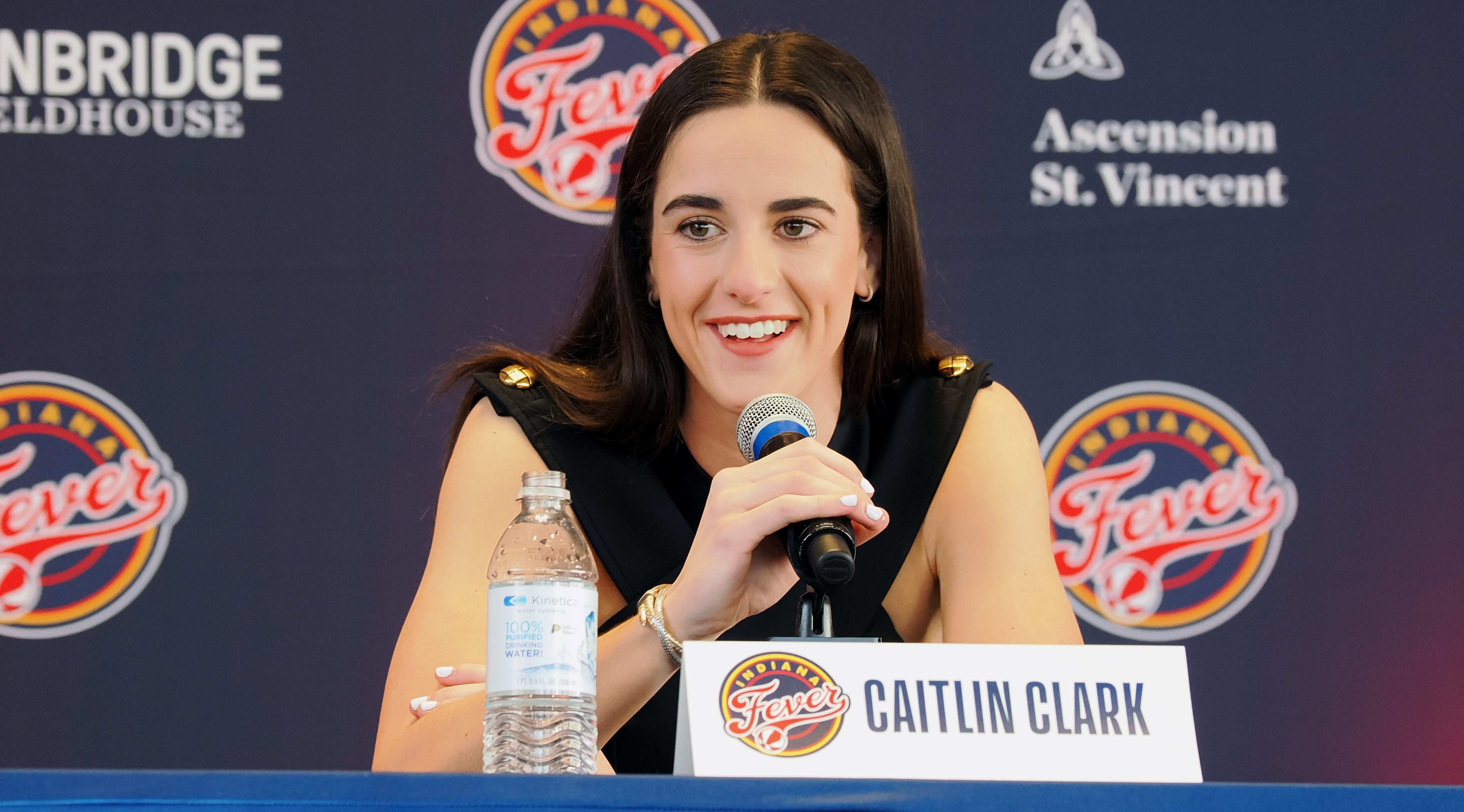
The analysis of new statistical categories has gained in popularity for years, but especially lately, with an influential group of sports bloggers among the leaders in the "Sabermetrics enlightenment movement." For a variety of reasons, not everyone is in favor of Sabermetrics, but from the fans to the front offices, there is clearly a movement away from just the categories on the back of a baseball card. Getting into all the new stats can be a little daunting, so we've asked a local expert to provide a primer of sorts. Bill Baer of the great Phillies blog Crashburn Alley has a three-part series for us. Today, a look at some pitching stats we may want to add to our understanding, including Phillies-centric examples of each and links to stat-related resources.
Batting Average on Balls
in Play (BABIP)
Calculated: (H-HR) / (AB-K-HR+SF)
Stay in the game with the latest updates on your beloved Philadelphia sports teams! Sign up here for our All Access Daily newsletter.
Example: Cole Hamels had a .262 BABIP in 2008 and a .321 BABIP in '09.
Interpretation: Pitchers tend to have little control over BABIP. Matt Swartz of Baseball Prospectus estimates that while hitters control about 36% of it, pitchers only control about 12%. Pitcher BABIP tends to hover around .300, the overall average. For example, Adam Eaton -- who we can all agree is a terrible pitcher -- has a career BABIP of .305 while two-time Cy Young award winner Tim Lincecum's career average is .303. Power pitchers tend to have lower-than-normal BABIP -- Nolan Ryan's career average was .275.
BABIP can fluctuate year-to-year and very rarely can we attribute that to anything within the pitcher's control. Cole Hamels is a great example. As I detail here, Hamels in 2009 was pretty close to the same pitcher he was in '08. The big difference was his BABIP. It was 3% lower than the average in '08 and 2.5% above the average last year and that goes a long way towards explaining his fortunes in both years.
Since pitchers can't control BABIP, we expect a regression to the mean. Hamels' skill level lies about halfway in between his '08 and '09 performances -- around a 3.50 ERA, to give a ballpark figure.
News
Left On-Base Percentage (LOB% aka Strand Rate)
Calculated: LOB% = (H+BB+HBP-R)/(H+BB+HBP-(1.4*HR)
Example: J.A. Happ stranded 85.2% of runners that reached base against him last year.
Interpretation: Like BABIP, LOB% can be used to determine if a pitcher's performance has been lucky. Happ's LOB% was lofty and Phillies fans would take that every day of the week. Unfortunately, a pitcher's BABIP has a large effect, logically, on his LOB%. Happ had a .270 BABIP, .030 lower than the .300 average.
The National League average LOB% is between 70-72%. Not one pitcher in all of baseball stranded as many runners as Happ did last season. The next-closest hurler was Matt Cain at 81.6%.
We expect a regression to the mean in this area for Happ. For example, a pitcher could throw the same exact pitches to the same exact hitters and get two different results. For instance, to borrow an example from Colin Wyers, "Walk, Strikeout, Groundout, Home Run, Strikeout" yields a much different result than " Home Run, Strikeout, Walk, Strikeout, Groundout".
It is possible that Happ simply pitches better from the stretch than from the wind-up, but we would need a larger sample than his 202 career innings (362 batters faced with men on base) before we could reach that conclusion with any confidence.
ERA Estimators
Calculated:
- FIP: (HR*13+(BB+HBP-IBB)*3-K*2)/IP
- xFIP: ((FB*.11)*13+(BB+HBP-IBB)*3-K*2)/IP
- SIERA: 6.145 - 16.986*(SO/PA) + 11.434*(BB/PA) - 1.858((GB-FB-PU)/PA) + 7.653*((SO/PA)^2) +/- 6.664*(((GB-FB-PU)/PA)^2) + 10.130*(SO/PA)*((GB-FB-PU)/PA) - 5.195*(BB/PA)*((GB-FB-PU)/PA) where +/- is as before such that it is a negative sign when (GB-FB-PU)/PA is positive and vice versa
Example: J.A. Happ had an impressive 2.93 ERA last year. His FIP, xFIP, and SIERA, however, were 4.33, 4.49, and 4.37 respectively.
SIERA is not as complicated as it looks. If you have taken high school algebra (if you were unlike me, you stayed awake during those classes), you can comprehend SIERA. But first, let's figure out FIP and xFIP.
ERA estimators do exactly what the name implies -- they estimate what a pitcher's ERA should be based on the factors he directly controls: strikeouts, walks, and hit batters. A good defense can have a large impact on a pitcher's ERA, so it is important to be able to separate pitching from defense, admittedly a difficult task.
Tom Tango, also the creator of wOBA, developed FIP. Dave Studeman of The Hardball Times was the progenitor of xFIP. What is the difference between the two? FIP accounts for home runs while xFIP accounts for just fly balls? Why is that? Studeman explains:
As [Ron] Shandler's research uncovered, pitchers don't seem to have a whole lot of impact on the number of home runs allowed, other than the extent to which they allow flyballs in general.
As to which of the two is more accurate, xFIP had a slightly lower root mean square error.
However, SIERA is the new goliath on the ERA estimator scene. Created by Matt Swartz and Eric Seidman at Baseball Prospectus, this new stat builds on FIP and xFIP and factors in the pitcher's batted ball splits.
The equation above -- the one that would have you considering dropping your class if you saw it in your textbook -- is just a regression equation for the various components of pitching within a pitcher's control.Once you understand all of the acronyms (I'll list them below) and remember PEMDAS, it makes more sense.
SIERA has consistently beaten other ERA estimators. The important findings, to quote Swartz/Seidman:
[...] strikeouts have a diminishing return as you accrue more of them, ground balls have an increasing return the higher your tally, and ground balls are more beneficial to pitchers who allow more walks or balls in play, especially because fly balls are more detrimental to pitchers who allow more runners on base.
The acronyms:
- PA: Plate Appearance
- SO: Strikeout
- BB: Walk
- GB: Ground ball
- FB: Fly ball (specifically an outfield fly ball, or OFFB)
- PU: Pop-up (infield fly ball, or IFFB)
It is important to note that batted ball numbers are calculated differently, depending on the source. FanGraphs, for instance, counts both infield and outfield fly balls together. They also don't count sacrifice flies in their BABIP calculation. So if you're attempting to calculate BABIP yourself and you're using FanGraphs data, remember to subtract IFFB from their FB total. However, you are probably not going to want to calculate SIERA yourself when you can find it completed here.
If you just need a rough idea of how good a pitcher really threw the ball, FIP and xFIP should get the job done. However, if you want specific results, look no further than SIERA.
(Ed. Note: Alright class, now recite SIERA to us from memory. Ready, go.)
Bill Baer is the author of the Phillies blog Crashburn Alley, which is partnered with ESPN and Rob Neyer's Sweetspot blog network. You can follow Bill on Twitter or read his other work at Baseball Prospectus (on Fridays), Baseball Daily Digest, and Heater Magazine. Look for Part 1 of this series here, and Part 3 later this week.


